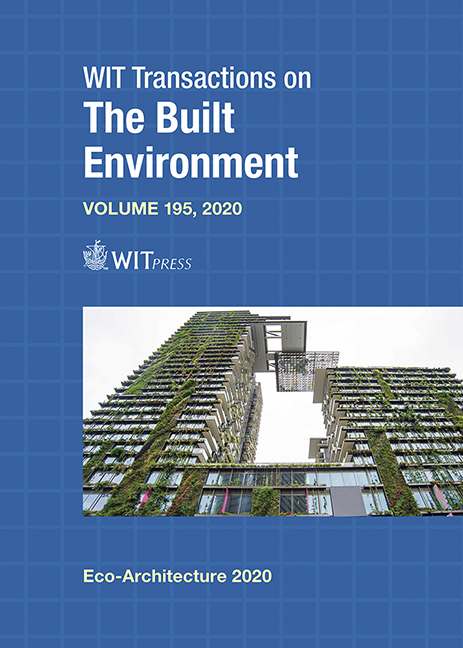BUILDING INTEGRATED PHOTOVOLTAIC SOLUTIONS IN ARID CLIMATES: EXPERIMENTAL ANALYSIS OF COPPER INDIUM GALLIUM SELENIDE AND CRYSTALLINE SILICON MODULES INTEGRATED AS VENTILATED FAÇADES
Price
Free (open access)
Transaction
Volume
195
Pages
9
Page Range
115 - 123
Published
2020
Paper DOI
10.2495/ARC200091
Copyright
WIT Press
Author(s)
EDWIN RODRIGUEZ-UBINAS, NOURA ALHAMMADI, MOHAMED ALANTALI, SARAH ALZAROUNI
Abstract
This paper presents a test and validation research on the energy performance of photovoltaic solutions integrated as opaque, ventilated façades in the harsh desert climate of Dubai, UAE. We have assessed the performance of copper indium gallium selenide (CIGS) and monocrystalline silicon (c-Si) modules in the three most suitable orientations for Dubai’s buildings (south, east, and west), over one full year. Additionally, we investigated the effect of modules’ temperature on the energy yield. The normalized energy yield of c-Si modules was continuously higher than the CIGS modules, across all orientations, with an average annual difference of 13.6%. Throughout the whole period, the south-oriented modules produced more energy than those in the east and west. During the period from October to February, they produced up to 48.5% more than the other orientations. The east and west façades, on the other hand, produced up to 40.9% more energy than the south in the period from April to August. Furthermore, although the annual irradiance on the west was only 1.7% lower than the east, the annual production of the west modules was more than 12% less. These modules start to receive direct solar irradiation in the afternoon when ambient temperatures reach their highest values, and after they accumulated heat during the morning.
Keywords
crystalline silicon, c-Si, CIGS, ventilated façade, building integrated photovoltaics, BIPV, solar energy, façade, rainscreen





